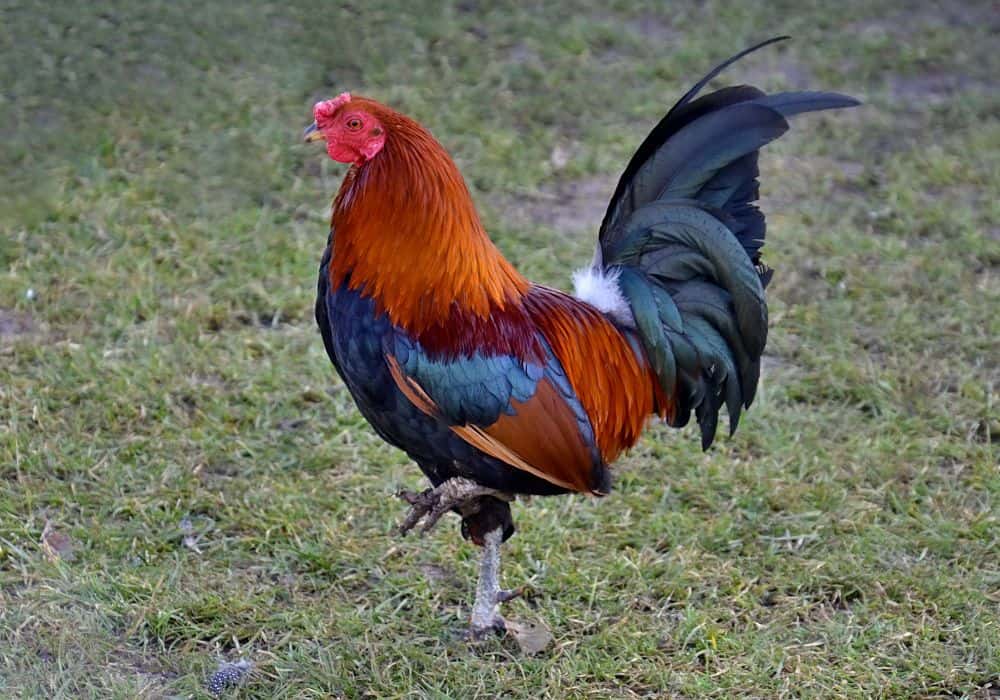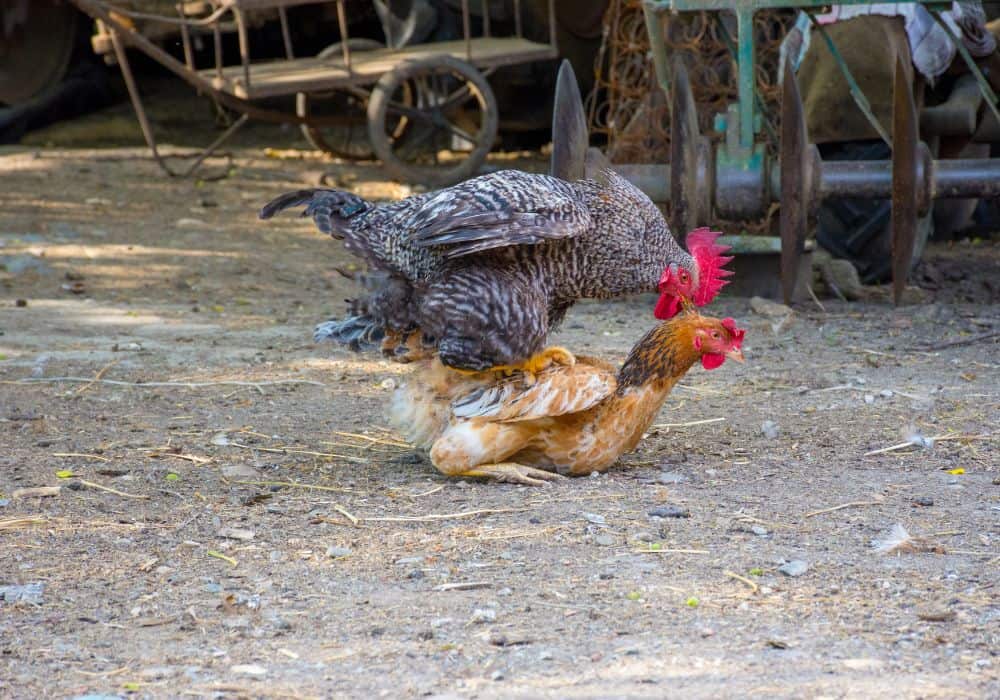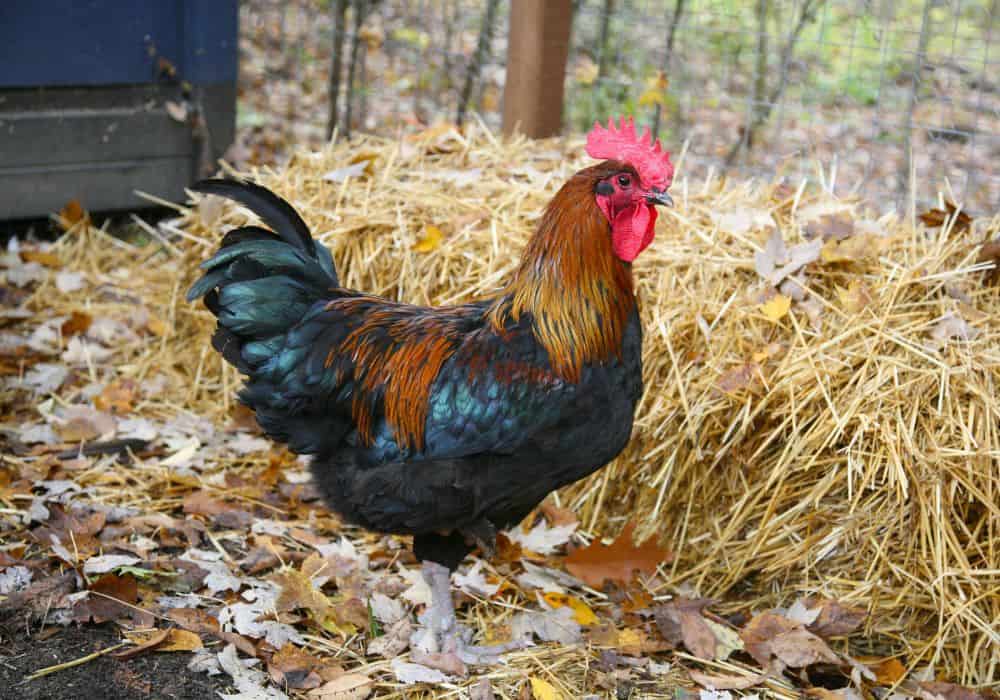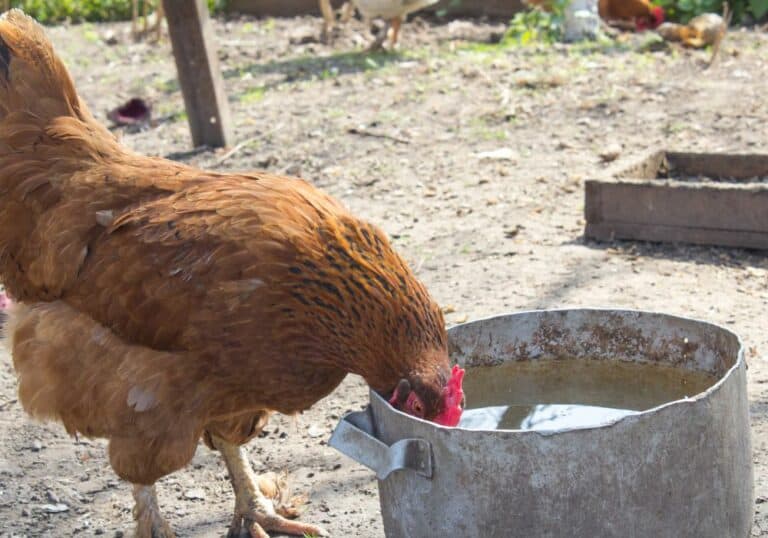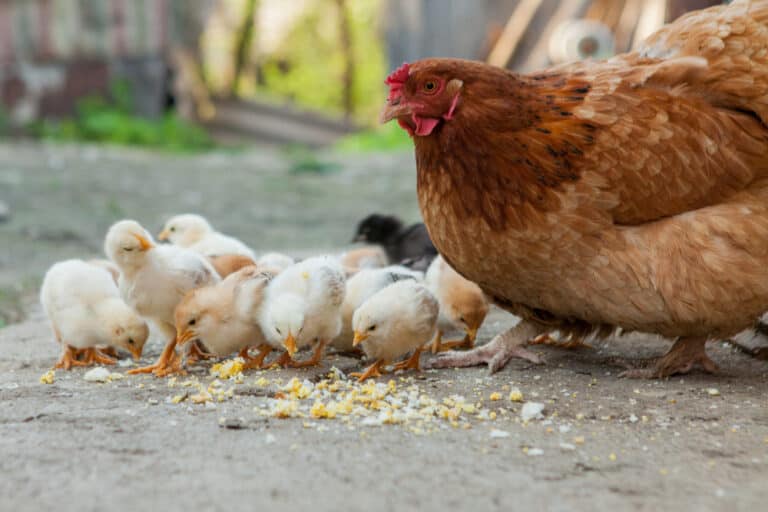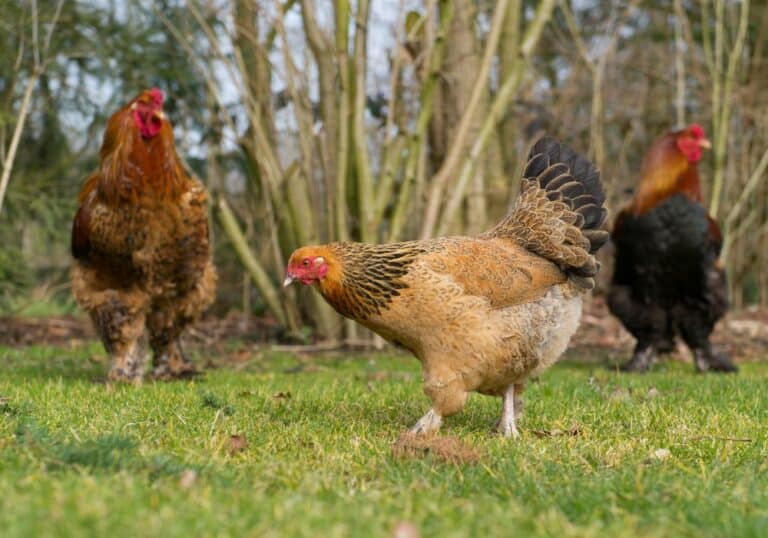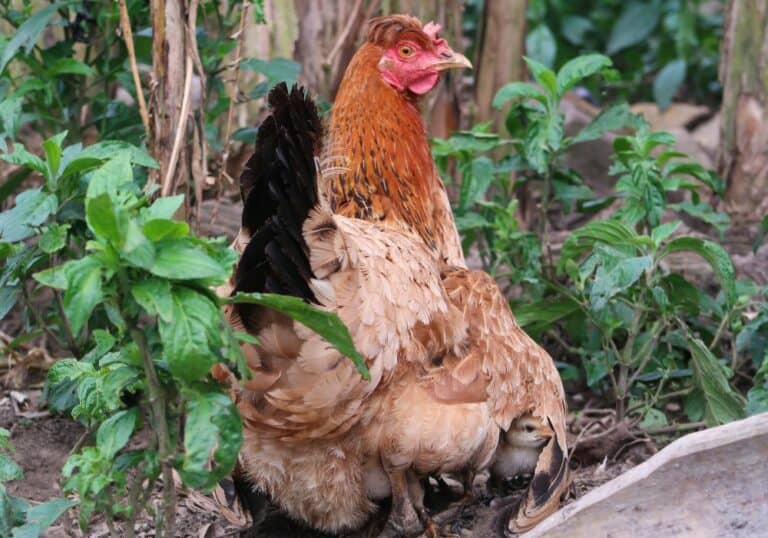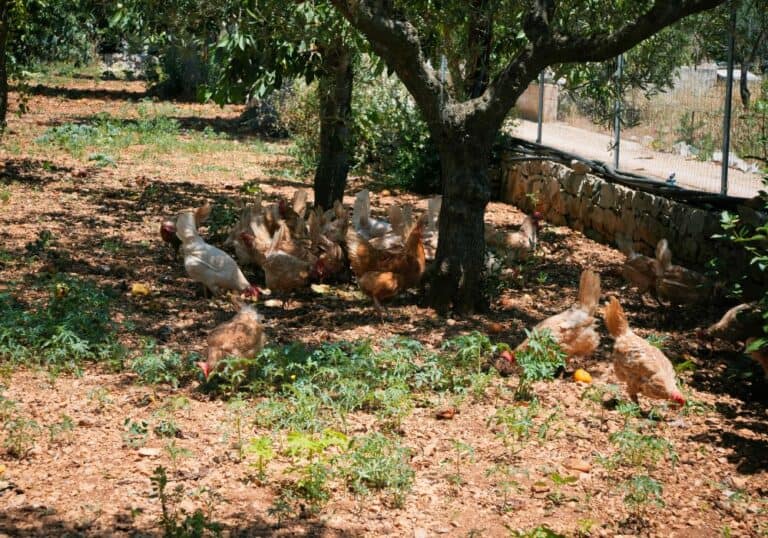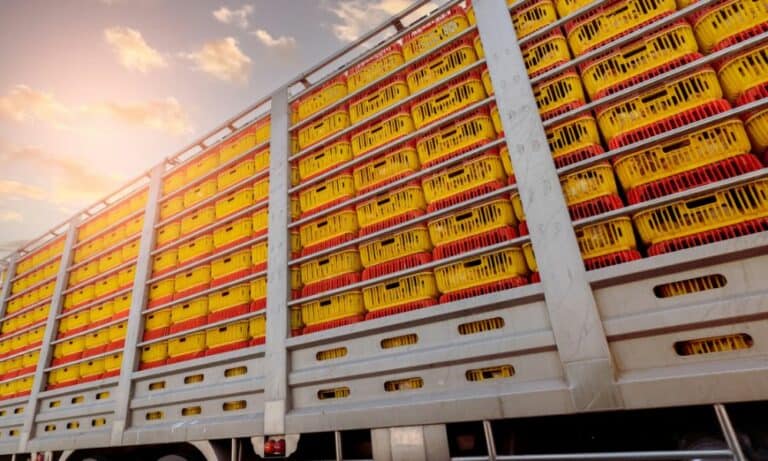Have you ever wondered where chicks come from and how hen’s eggs are fertilized? Well, it all starts with reproduction. Even if female chickens—aka hens—can lay eggs and have baby chicks without a male chicken around, they still need a rooster to mate with to fertilize the eggs.
But human reproduction isn’t the same as chicken mating. The biggest difference stems from the anatomy of the chickens’ genitals—specifically the fact that roosters (like most birds) have unique reproductive organs.
So, do roosters have penises? How different are roosters’ reproductive organs compared to human ones? We’ll answer these cheeky questions and more, so keep reading to find out the answer!
Roosters Don’t Have Penises—But They Can Still Mate
Like most bird species like ostriches and geese, male chickens don’t have a conventional penis, but it doesn’t mean they don’t have a reproductive system. They do have one, but it’s not something that we’re used to seeing as mammals.
As chicken embryos in an egg, male chicks develop a phallic organ similar to a penis. However, a protein that shows up during the embryo’s development triggers cell death in the area, keeping the penis from growing further.
The University of Florida discovered back in 2013 that this was because of a gene called Bmp4. When this gene is “switched on,” it forces cells in what would be the chick’s penis to die out and not grow back. As a result, male chicks are born with only a slight bulge in their genital area.
This small bump is called a papilla, and it’s a rooster’s equivalent to a penis. The papilla is found inside the rooster’s body, right at the edge of his cloaca—the cavity connected to a chicken’s digestive, urinary, and reproductive tracts.
The papilla is where a rooster’s semen is ejected. To pass it on to a hen, a rooster will press his cloaca onto the female chicken’s cloaca. The sperm then travels through the hen’s reproductive system. And when she lays her eggs, there’s a big chance that they will be fertilized.
Do Roosters Have Testicles?
Because roosters only have a small papilla as a reproductive organ, mating doesn’t rely on penetration. However, it does rely on the rooster’s semen production. If you’re wondering “Do roosters have penises?” the next question you might ask is—do they have testicles?
The answer is yes. Roosters have two testes in front of the kidneys, right by their backbone. Like human testicles, these testes have an oval, bean-like shape. The primary job of rooster testicles is to store semen until the male and female chickens are ready for copulation.
These testes are also commonly called “gonads,” or the testicles of a male chicken. A female chicken also has one gonad, which serves as its ovary.
Each milliliter of semen stocked in the testes can contain up to five billion sperm. It takes about 15 days at a time for sperm to form and produce in the testes.
How Chicken Mating Works
Step 1: Wooing the Hen
Mating always has a touch of romance, at least in the beginning. In the case of chickens, a rooster will strive to attract a hen of his choice and get her attention in different ways.
Most roosters will do a mating dance and flap their wings in a flashy way to get the hen to notice them. Sometimes, the rooster will even dance around the hen. Although it sounds like an innocent courtship, this is actually already the first step in getting her locked into a position for mating.
Step 2: Tidbitting
Roosters are known to be providers for the flock. They go out and look for food and then bring it back to their families to eat. When trying to mate, a rooster will use this to his advantage in the form of tidbitting.
Tidbitting is a technique roosters do to drop a delicious seed, bug, or other types of food in front of their favorite hen as an offering of sorts. Then, he’ll step back, bob his head eagerly, and hop from one foot to the other to show his excitement.
Sometimes, a rooster will only pretend to have food for his hen. And when she comes over to see what food is being offered, the rooster will make his move and get her into the mating position.
That said, the female will always have a say in whether or not she wants to mate, too. If she accepts the rooster’s proposal to mate, she bends over and raises her tail to give the rooster access to her cloaca.
Step 3: The Big Move
When the hen gets into mating position in a squat, the rooster will stand behind her and touch their cloacas together. This is called treading, and it can sometimes hurt the hen and cause damage to her tail feathers and skin if it’s too rough.
As their cloacas touch—or “kiss”—the rooster ejects his semen and then hops off after the hen has received it. The semen then goes through the hen’s vent and travels all the way to her oviduct, from which she can develop and lay eggs.
Chicken mating is actually a very fast process. Many people who aren’t exposed to chicken-raising farms might be surprised at how quick and perfunctory it is. All it takes is for a rooster to get on top of a hen’s back, eject his semen for about 30 seconds, and they’re done.
The speed at which the chicken mating process happens is mainly because roosters don’t have penises. Because he merely ejects his sperm into the hen’s cloaca, it only takes a few seconds—none of that fussy penetration nonsense that can take up so much time.
Want to learn more about how a hen and rooster get together for that cloacal kiss? See how mating turns into egg-laying through this informative video:
Extra Tips to Keep Your Rooster Fertile
Like humans, roosters can also be infertile. As they grow older and weaker, their sperm count also decreases, leading to fewer fertilizations in the chicken flock.
If you want to make sure your roosters stay fertile so your hens can lay as many eggs as possible, here are some tips you might want to keep in mind:
1. Vaccinate them to keep the whole flock safe
A healthy rooster is a fertile rooster. So, you need to do everything in your power to keep diseases at bay within the flock, especially when it comes to your roosters. If you have a sick rooster spreading diseases in your flock, you can’t expect to produce fertilized eggs.
Before introducing your rooster to the flock of hens, make sure you get them vaccinated for common diseases like fowl cholera, coccidiosis, and more. Only go to a trusted doctor for these vaccinations, and always make sure you’re up to date with them.
2. Make sure they have a nutritious diet
Having good nutrition is the key to rooster fertility. If a rooster is weak and scrawny with deficiencies in key vitamins, minerals, and fats, it may not be as fertile. Feed your roosters properly with plant-based food and animal products.
Give your roosters and the rest of your flock some fruits and veggies as treats. These can include carrots, cucumbers, non-sugary cereals, leafy greens, berries, and more. Commercially produced chicken vitamins are also a terrific option.
3. Have a good rooster-to-hen ratio
If you have just one rooster assigned to mate with and fertilize the eggs of a hundred hens, it’s incredibly inefficient. Not only will you be wasting a lot of time, but you will also tire out your rooster and get them sick faster.
This can lead to low fertility, which you don’t want. In very extreme cases, it can lead to exhaustion and death in your roosters.
Make sure that the number of roosters you have in your flock is a good ratio to your hen count. The rule of thumb is to have one rooster each for ten hens. Try to get them into a regular rotation as well, so that they don’t get tired of constantly mating with the same hens again and again.
Conclusion
Roosters don’t have penises. They have a small bulge called a papilla, from which their semen comes out. The papilla is hidden inside the walls of the rooster’s cloaca. When not mating, their sperm is stored in their testes, which are positioned right in front of their kidneys.
However, it does not mean they can mate with hens and fertilize their eggs. Through a mating process referred to as the cloacal kiss, males can inject their semen into a female chicken’s system to fertilize eggs and make babies.
We hope you’ve learned a thing or two about the rooster’s reproductive system and chicken mating to make babies. If you have any more questions about it, feel free to leave a comment and we’ll get back to you right away. Happy chicken raising!

